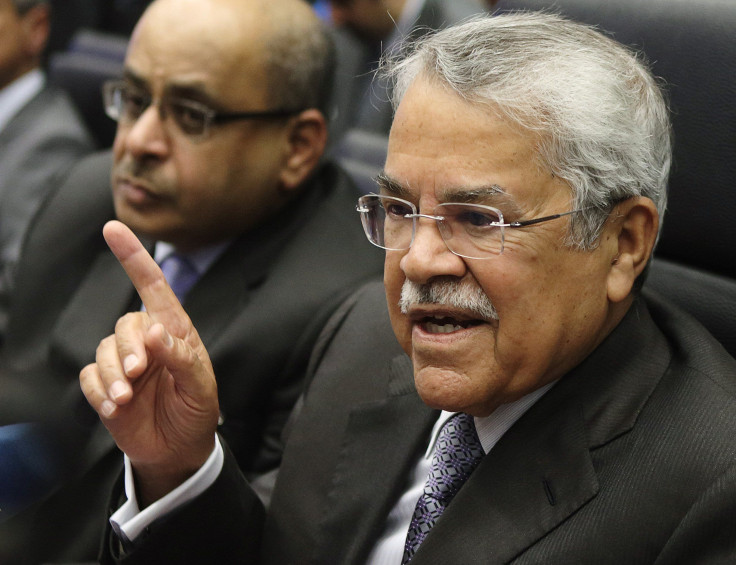Saudi Arabia Feeling Pain Of Oil Price Plunge, But It Has Enough Currency Reserve To Last For Years

Details of Saudi Arabia’s 2015 budget were released Thursday showing how much the oil-dependent country is losing in revenue amid plummeting oil prices. The country says it will not intervene to stem the 40 percent price plunge since June despite the impact on its economy.
The country, which sits on 16 percent of the world’s proven oil reserves, said 2015 spending will rise slightly, to 860 billion riyals ($229.3 billion) despite a nearly 16 percent drop in projected revenue from last year, to $190.7 billion. This leaves the country with its largest deficit ever at $38.6 billion and the first one since 2011 in the wake of a global economic downturn.
"I believe we are headed for a difficult year in 2015. I think the actual deficit will be around 200 billion riyals [$53.3 billion] because actual revenues are expected to be lower than estimates," Saudi economist Abdulwahab Abu-Dahesh told AFP.
But the country is also sitting on the world’s largest currency reserves, estimated to be about $750 billion in 2014, which means the country can last for years spending more than it takes in. Nearly 90 percent of the country’s revenue comes from oil exports.
Saudi Arabia says it wants the market to stabilize on its own, without cutting production to increase oil prices. Saudi Arabian Minister of Petroleum and Mineral Resources Ali al-Naimi Tuesday defended the decision by the 12-member Organization of the Petroleum Exporting Countries (OPEC), whose biggest member is Saudi Arabia, to maintain a production ceiling of 30 million barrels of crude a day. Saudi Arabia makes up nearly a third of that production capability, which gives the country immense control over global oil prices.
Saudi Arabia’s decision not to intervene to stop falling oil prices has led analysts to speculate the country is using oil as a weapon against Russia, which supports Saudi Arabian nemesis Syrian President Bashar Assad, and the desert kingdom’s longtime enemy, Iran.
“Saudi Arabia is once again using its ‘oil weapon,’ as it did during the 1973 oil embargo, to pressure its political rivals,” New York University journalism Professor Mohamad Bazzi wrote in an editorial published this week by Turkey’s Hurriyet Daily News. “But instead of driving up prices and cutting supply, the Saudis are doing the reverse.”
The main reason behind Russia’s currency crisis is that, like Saudi Arabia, its economy is heavily reliant on petroleum exports. And Iran, already suffering from Western sanctions related to its nuclear program, has less economic leverage than Saudi Arabia to weather low oil prices.
“It looks very, very tough [for Iran],” Robin Mills of Manaar Energy Consulting, told Bloomberg earlier this month. “We still might be in for a couple more years of lower oil prices. They’ve got to plan for the long haul.”
Another target is the U.S. shale energy boom the Economist magazine argued earlier this month in its “sheik vs. shale” article depicting Saudis trembling over the rising U.S. production.
Al-Naimi has rejected the idea his country is concerned about the U.S. shale boom that has lowered its demand for oil imports. "I was the first minister to welcome the production and addition of shale oil in 2008 and 2009, in Washington," al-Naimi told CNN on Monday.
© Copyright IBTimes 2024. All rights reserved.






















